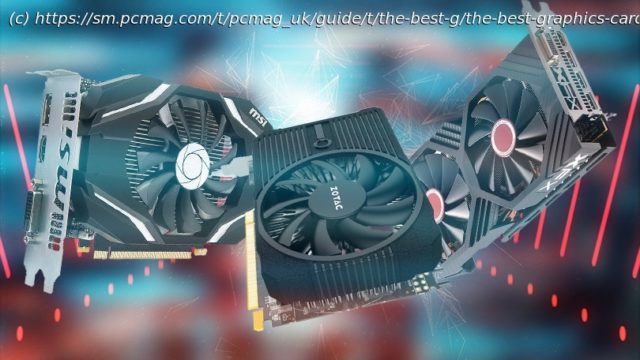Here’s how to shop for a graphics card for gameplay on today’s best-value monitors—1,920 by 1,080 displays—along with the top-rated cards in our testing.
If you frequent gaming and hardware sites, you’ll see lots of buzz around “4K gaming” on new high-end monitors, as well as the rise of more-affordable 1440p (2,560-by-1,440-pixel) displays. Spend long enough in those parts, and you might assume that high-res gaming and expensive, monster video cards rule the PC-gaming world. Not so! Yes, they are important, and yes, they are the eventual future—when they get cheaper, much cheaper. For the foreseeable future, though, playing at 1,920 by 1,080 pixels (a.k.a.1080p, or “full HD”) will remain the sweet spot for most PC gamers. Today,1080p monitors are affordable—you can find plenty of ’em down around $100—and even a midrange video card can run the latest games on one of these displays with a silky-smooth frame rate. In fact, according to the latest Steam Hardware Survey results,1080p remains by far the most common native display resolution for PC gamers on the service, outranking all other resolutions combined. The truth is, though most gamers would love to play at the highest resolution possible, buying both a high-res 4K (3,840-by-2,160-pixel) or 1440p display and a video card that can ace gaming at that higher resolution will cost you plenty. (One depends on the other.) Most of us just want our games to look good and run smoothly, and that’s much less expensive to achieve at the mainstream resolution of 1,920 by 1,080. This resolution has been the de facto standard for gaming for some time now, and it will stay that way until cheap 1440p monitors become much more common, or 4K-capable graphics cards become reasonably affordable. (At this writing, gaming at 4K resolution with leading PC titles was impossible to achieve with a card costing much less than $400, unless you were willing to dial back on the detail settings.) So purchasing a video card that can run games at a smooth clip at 1080p is a solid investment, one that should keep you happy for at least a few years, if not longer.1080p Gaming Cards: A Competitive Field Just one problem: Since 1080p is such a popular resolution, a boatload of video cards are competing for the top spot in the category. The field of 1080p graphics cards is more granular as 2021 opens up than it’s ever been, with nearly a dozen different card classes (defined by their different core graphics processors) to choose from. But that’s where we come in. We’ll walk you through the features you need to pay attention to when shopping for a 1080p-ideal video card, and outline the best cards we’ve tested for gaming at this resolution, given your budget. The good news? Nvidia’s introduction of its “Turing”-generation video cards back in 2018 and 2019, alongside AMD’s “Navi” line of cards, has meant better 1080p power than ever for under $300. Nvidia also, in mid-to-late 2018, introduced its first cards in its new GeForce RTX line, including the GeForce RTX 2080 and GeForce RTX 2070, as well as an expensive, elite-class GeForce RTX 2080 Ti. (Most of these have been augmented and, in some cases, replaced by newer, mid-2019 “RTX Super” editions, as well as the newest RTX 30 Series cards like the RTX 3080 and RTX 3070.) While these high-end cards will run any game very nicely at 1080p, they are mighty, mighty overkill for this resolution, starting at—in theory, anyway—$499 for cards based on the RTX 3070 and around $700 for the RTX 3080 cards. (Those are MSRPs or list prices, and seldom the going rate at the moment; due to silicon shortages and the activities of scalpers, it’s pricing pandemonium out there right now.) But even with higher prices than normal here in 2021, you don’t need to spend anything like that for 1080p play…in most cases. Buying Basics: What to Look for in a 1080p Card Most cards that are “good enough” for 1080p gaming ring up at between $100 and $300 at this writing. Pricier cards will certainly do the job, too. But the further you get above $300, the more into overkill territory you’ve gone for most games. Here are the key factors in play. How Much Video Memory Is Enough? The amount of graphics memory (or video RAM) that your video card has onboard directly affects the resolution at which you can game smoothly, as well as the detail settings that are possible. The overall power of the graphics processing unit (commonly called the “GPU”) on the card dictates how well you can run a specific game at certain settings, too. But think of the video memory as a freeway that opens up lanes for the GPU to work its magic without getting congested. Without enough video memory, the GPU will be constrained, unable to perform at its maximum potential. The reason: The video card actually crunches all the pixels that go onto the screen while they are in memory. So, the more data that’s needed, either for a certain resolution or to display more detail in a game, the more memory is required to handle it efficaciously. That’s why high-end video cards tend to have more on-card memory; more of it is needed to manage all the pixels that render games at higher resolutions and at higher detail settings. Generally speaking, for 1080p gaming,2GB of video memory is an adequate minimum, but 4GB is much better. In cards under $300 nowadays, you’ll see graphics memory ranging from 1GB up to 8GB. A few of the key cards for 1080p gaming come in 3GB/6GB and 4GB/8GB variants. Going with a card that has 6GB or 8GB of RAM is fine, but don’t expect miracles, as performance generally does not improve by a whole lot in cards at this resolution versus 3GB or 4GB, all else being equal.






